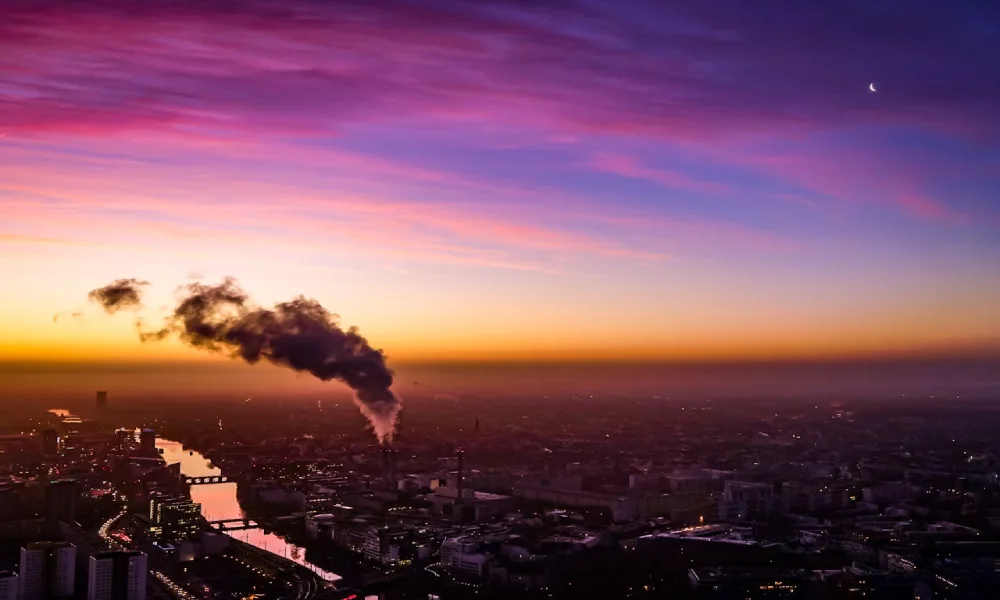
With growing environmental awareness, a common question arises: Which Type of Pollution Includes CFCs and Smog? Air pollution includes CFCs and Smog as its primary components. They create a big threat to both human health and the environment.
CFCs, once thought harmless, are now known to be responsible for damaging the ozone layer. While smog, a dangerous combination of pollutants, causes respiratory problems and reduces air quality.
CFCs and Air pollution

CFCs are harmful chemicals that contribute greatly to air pollution. They damage the ozone layer and contribute to global warming.
What are CFCs?
Chlorofluorocarbons or CFCs are artificial chemicals made of carbon, chlorine and fluorine. Various applications began using CFCs in the early 1900s. They worked well to make aerosol sprays function, air-conditioning and to keep stuff cold in refrigerators.
They were once viewed as amazing because of their safe operation and efficient performance without risk of damage.
CFCs Environmental Impact
CFCs, once thought harmless, have proven to be a major environmental problem.
Released into the atmosphere, they rise to the stratosphere where sunlight breaks them down, releasing chlorine. This chlorine destroys the ozone layer, Earth’s protective shield from harmful UV radiation. The damage of ozone increases the risk of serious issues, such as:
- Sunburn
- Skin cancer
- Early skin aging
- Eye clouding
- Agricultural harm
- Aquatic habitat disturbances
- Deterioration of materials
CFCs Impact on Ozone Layer
When scientists found a hole in the ozone layer over Antarctica in the 1980s, it made everyone consider about what human activity contributes to air pollution and made people aware that how harmful CFCs could be.
This discovery highlighted, which type of pollution includes CFCs and smog, prompting global concern and action.
Smog and Air Pollution

Smog is basically dirty air. It’s a thick, hazy mess that makes it hard to see and can be really bad for your health.
Smog happens when pollution from things such as cars, factories, and burning stuff mixes with the air. It’s a big problem in many cities.
What is Smog?
Smog is a mixture of unpleasant particles within the air, which makes it difficult to view and breathe. It is a very serious problem that hits both the environment and human health.
There are two main types, photochemical smog arises when UV rays from the sun combine with pollutants like nitrogen oxides (NOx) and (VOCs) volatile organic compounds.
Industrial smog, which is made up of chemicals and microscopic particles that are coming from factories, power plants, and other industrial sites.
While CFCs are hazardous high up in the sky, smog is a major problem down here where we breathe.
Causes of Smog
Smog comes from lots of human activities such as driving vehicles, burning fossil fuels in industry, power plants, and farming practices.
Photochemical smog is created when NOx and VOCs is generated into the atmosphere, when we burn substances such as coal and gas.
Effects of Smog
Both humans and the environment get affected from smog pollution. Breathing in smoggy air can lead to a number of serious respiratory issues including asthma and bronchitis, especially for children and aged people.
Also, it’s very harmful to plants and wildlife, ruining their habitats and makes it difficult for them to thrive. Smog lowers the enjoyment of outside activities and sights, which depresses people who live in cities.
Connecting CFCs and Smog

The connection between Chlorofluorocarbons (CFCs) and smog shows how they both play a part in air pollution.
They work in different ways but still make the air bad for us and the environment, which is a type of pollution that includes CFCs and smog.
CFCs and Smog working together make it difficult to maintain the health of our surroundings. Fighting them both and maintaining safe and clean air need our cooperation.
Reducing CFCs and Smog
Global Efforts
The governments, cities, as well as environmental groups, are cooperating in reducing air pollution. There are tighter regulations on industries and vehicles.
Besides, world cooperation in solving the CFC problem aided through the Montreal Protocol banning the production and use of these chemicals that have harmed the ozone layer, thus reducing climate change.
Local Efforts
Here are a few simple steps you can take to minimize air pollution and improve air quality:
- Green Your Commute: Cycle, walk, or take public transport.
- Energy-Efficient Living: Save energy through efficient home appliances and do not forget to turn off the lights in places that are not in use.
- Support Clean Energy: Increase renewable energy sources like solar and wind power.
- Mindful Consumption: Buy more environmentally friendly products and avoid using single use plastics.
- Plant a Tree: Start helping in the greening of the earth by planting trees that can give much oxygen, clean the air, and also absorb carbon dioxide in our atmosphere.
- Advocate for Policy Change: Support policies that promote clean air and sustainable practices.
- Spread Awareness: Educate others on the effect of air pollution and inspire them to make any positive change.
- Choose Eco-Friendly Products: Buy products that are marked as CFC-free to ensure the protection of the ozone layer and also its contribution towards reducing the effect of air pollution.
FAQ's
Which type of pollution includes cfcs and smog?
Air pollution.
What type of air pollution is smog?
Smog is a type of air pollution caused by the interaction of sunlight with vehicle and industrial emissions.
What type of pollution is caused by CFC gases?
CFC gases primarily contribute to ozone layer depletion.




